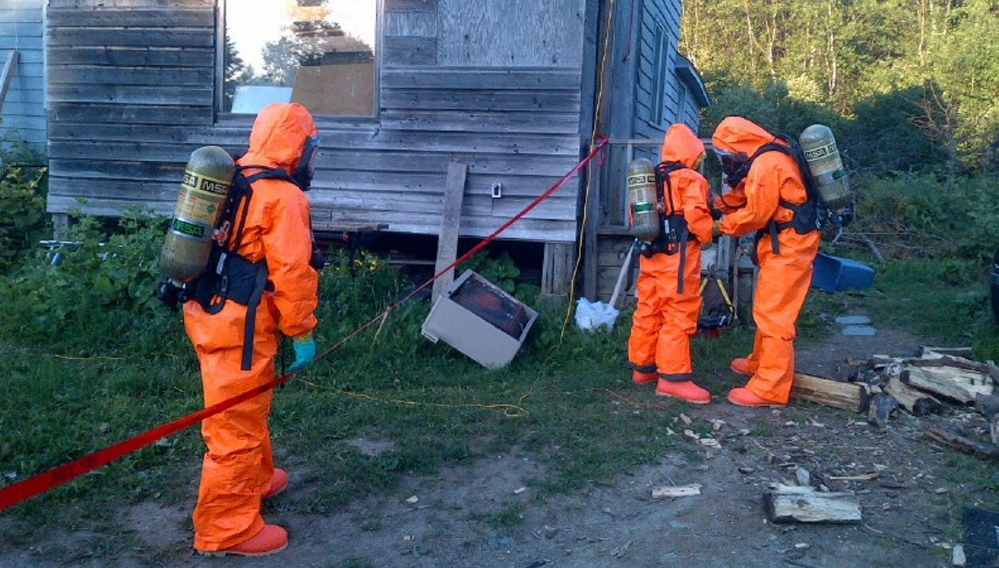The abuse of opiates has been a widespread problem in Maine for nearly two decades, but the use and manufacturing of methamphetamine are becoming issues here as well. A state team has already responded to 20 methamphetamine manufacturing operations this year – as many as it dealt with in all of 2013. Now their efforts have gotten a boost: A two-year, $905,000 federal grant will pay for four state agents who will focus exclusively on identifying and investigating complaints of suspected methamphetamine manufacturing.
Securing the competitive Justice Department funding is a big win for the Maine Drug Enforcement Agency. And nobody wants methamphetamine, an addictive drug that can cause aggression, delusions and brain damage, to gain a foothold here.
The support, though, should be going not only to law enforcement but also to drug abuse prevention and treatment. Instead, Maine has passed up opportunities to cut off methamphetamine makers at the source and to fund care for those addicted to the drug. The scope of substance abuse will only grow unless the state plans and funds a multi-pronged strategy to fight it.
According to a 2013 state report, most methamphetamine produced in Maine comes from small-scale operations that can make small amounts in a short time by mixing ingredients in soda bottles or other plastic containers.
The key ingredient – pseudoephedrine – is familiar to law-abiding Americans, too, as an effective, over-the-counter drug for colds and allergies. So laws on pseudoephedrine have to keep it away from methamphetamine makers while still allowing access to the legitimately ill.
The first limits on the sale of pseudoephedrine involved putting it behind the counter, requiring ID for purchase and setting restrictions on the amount to be sold to any one customer. But none of those ideas worked in hard-hit Oregon.
Then in 2006, that state put in place the nation’s most restrictive law: one that allows pseudoephedrine to be sold by prescription only. The number of methamphetamine operations reported in the state has plummeted and remained low. The prescription-only law has also been effective in Mississippi, the federal Government Accountability Office concluded in 2013.
Meanwhile, prescription-only laws have failed in Maine and 22 other states. (Maine’s bill to make pseudoephedrine a prescription drug died in committee in 2011.)
The measures Maine implemented instead – higher penalties for possession of specific quantities of pseudoephedrine and an electronic system to track individual compliance with purchase limits – aren’t as effective as the prescription mandate, according to the 2013 GAO report.
What’s more, Maine doesn’t have many resources for residents who become addicted to methamphetamine – or any other drug. State funding for substance abuse programs has been cut back, and access to inpatient and outpatient treatment has become difficult. And we’ve also lost out by repeatedly turning down federal Affordable Care Act funds to expand MaineCare, which would have included drug treatment.
Substance abuse is a vicious circle, and Maine can’t stop it just by arresting people who make and sell drugs. The state also has to cut off the supply chain for drug producers and provide support to the people caught in the trap of addiction. We know more than ever what works and what doesn’t – now we must provide the funding to put that knowledge to work.
Send questions/comments to the editors.



Success. Please wait for the page to reload. If the page does not reload within 5 seconds, please refresh the page.
Enter your email and password to access comments.
Hi, to comment on stories you must . This profile is in addition to your subscription and website login.
Already have a commenting profile? .
Invalid username/password.
Please check your email to confirm and complete your registration.
Only subscribers are eligible to post comments. Please subscribe or login first for digital access. Here’s why.
Use the form below to reset your password. When you've submitted your account email, we will send an email with a reset code.